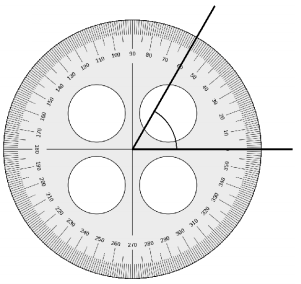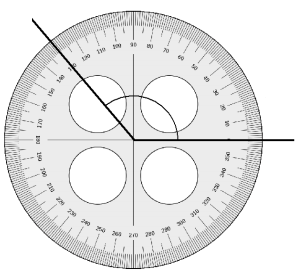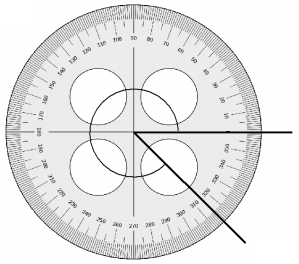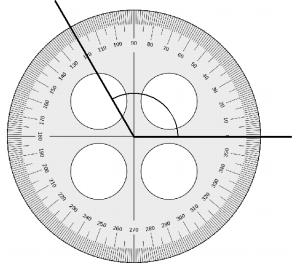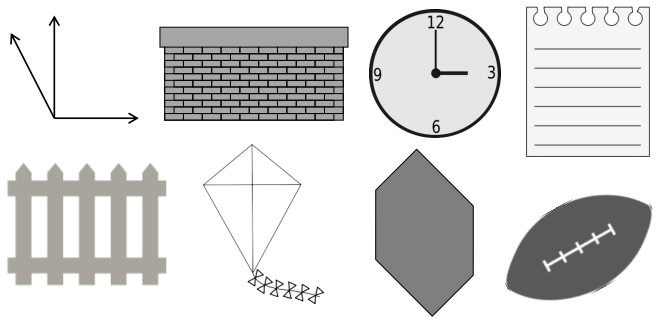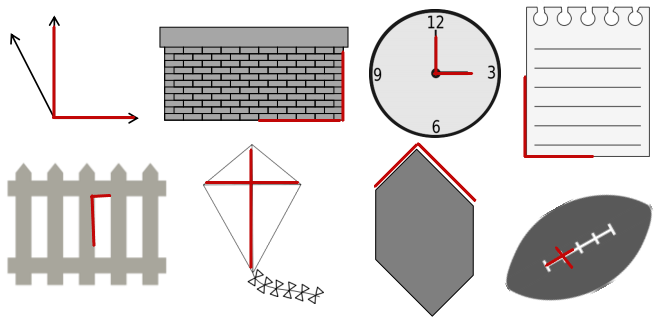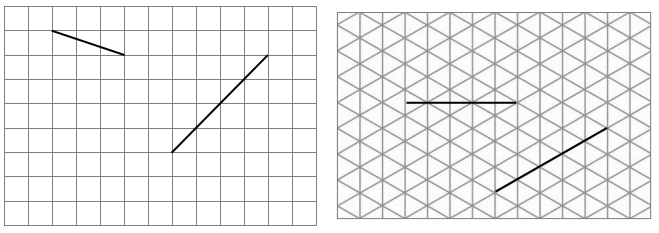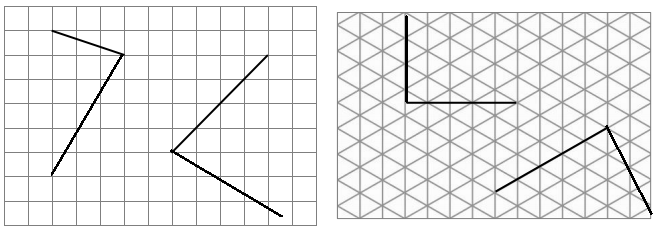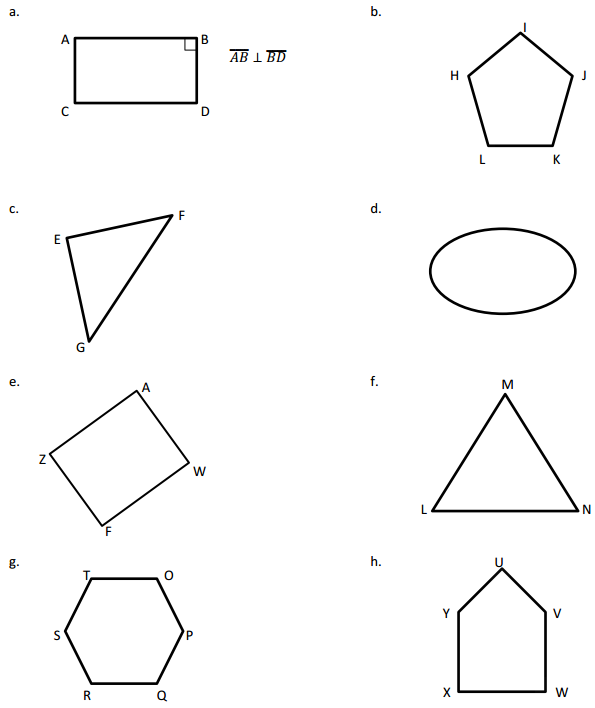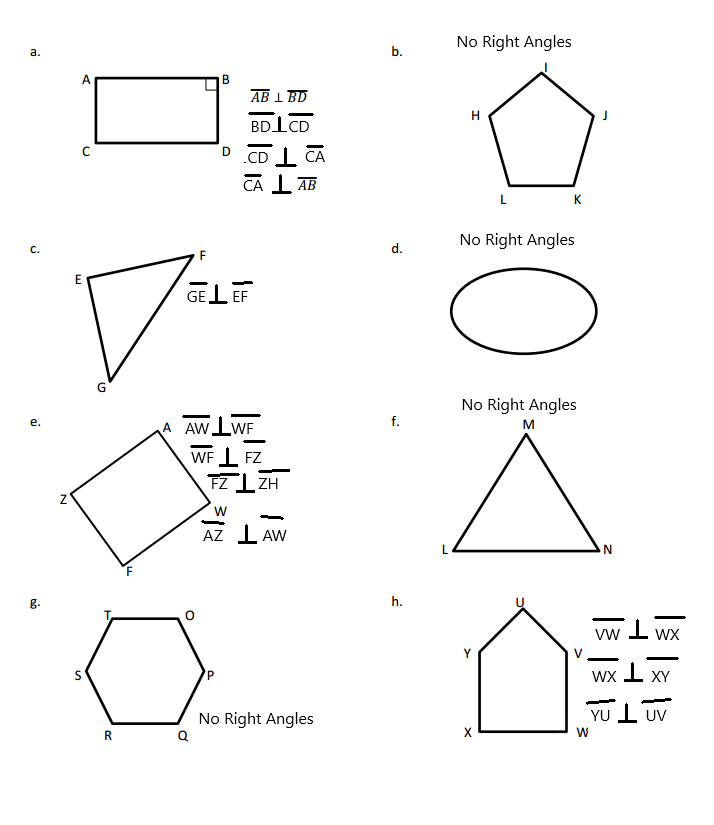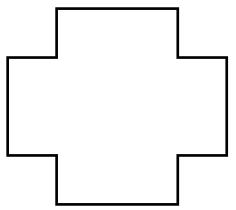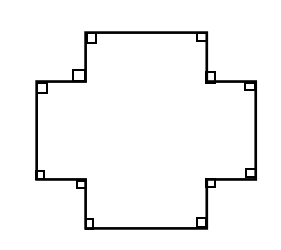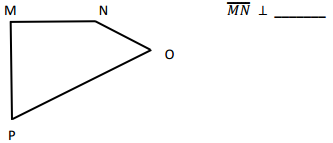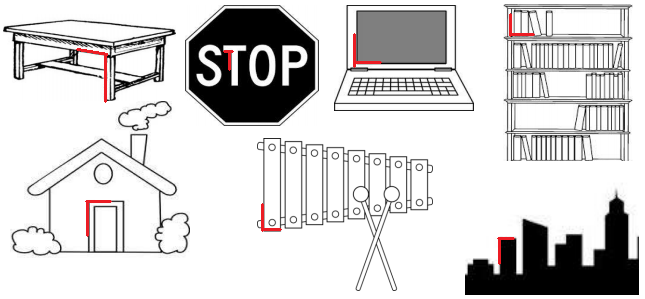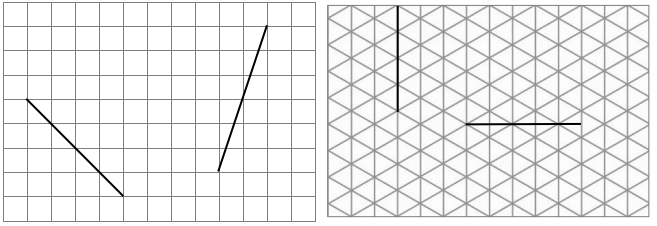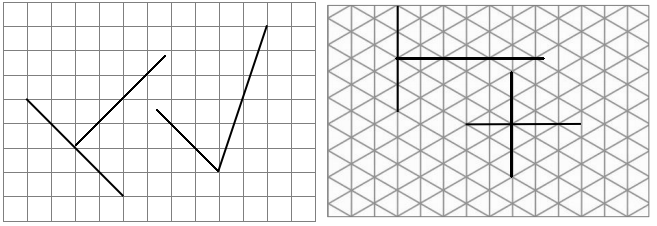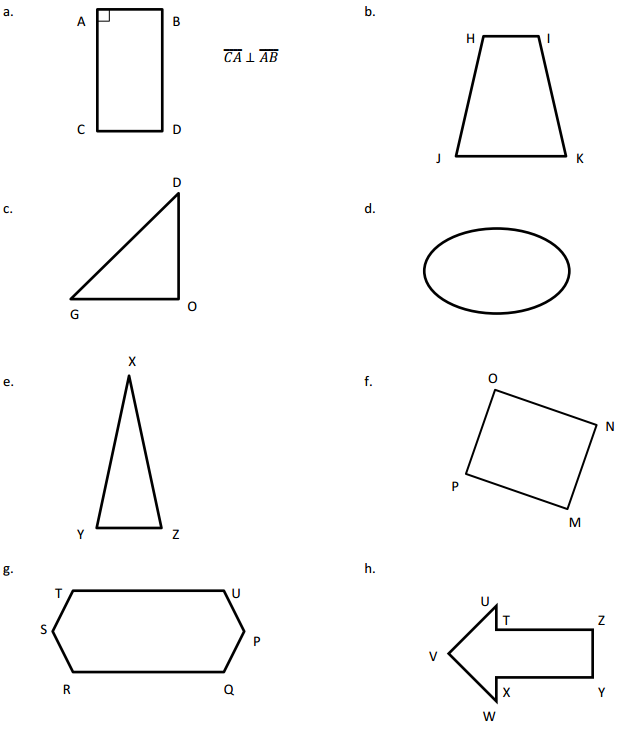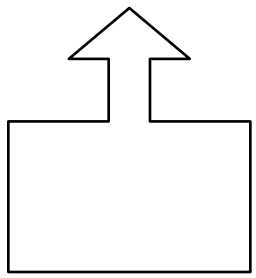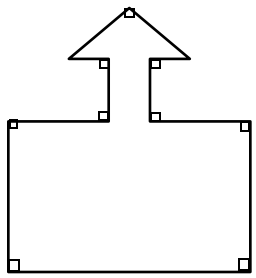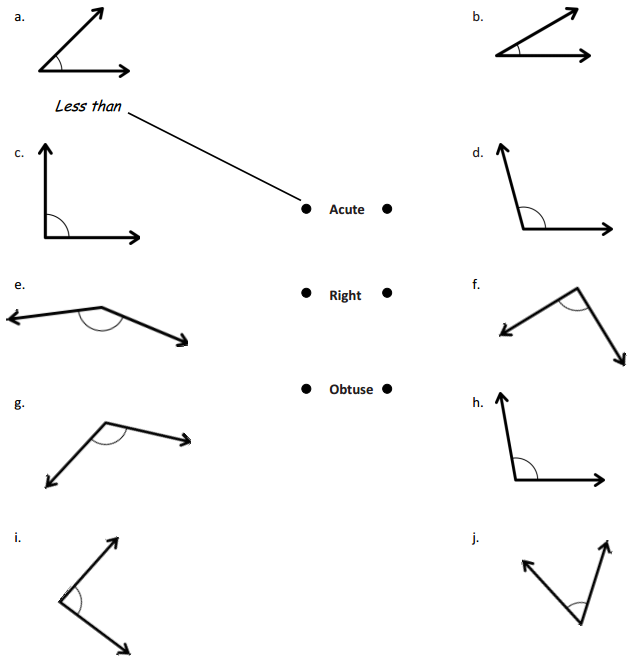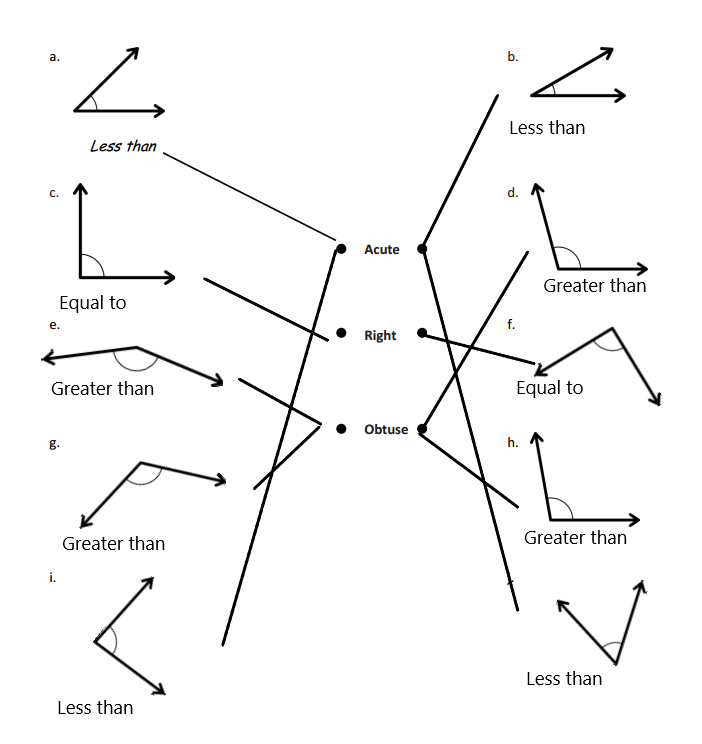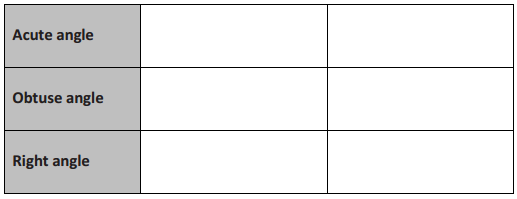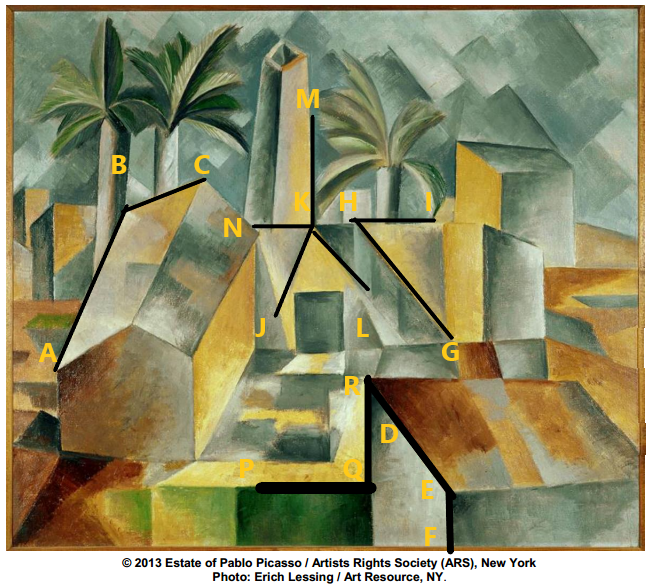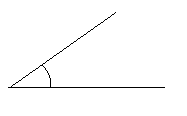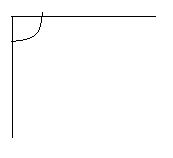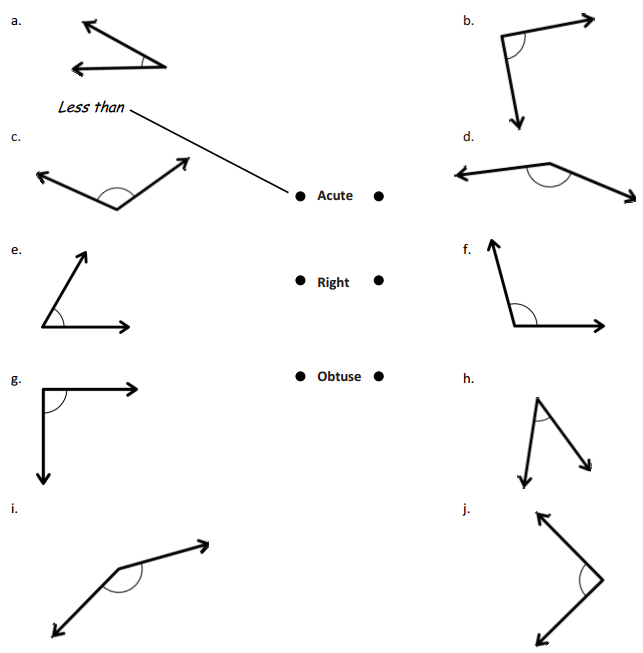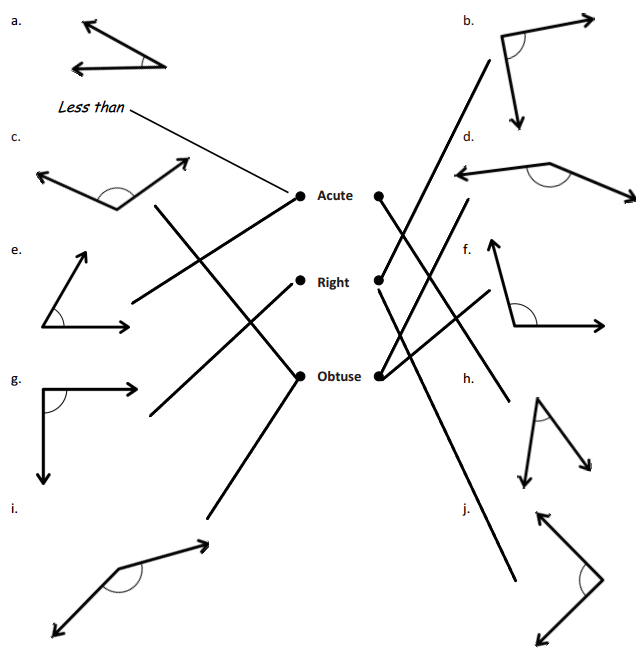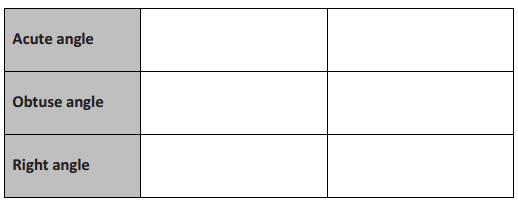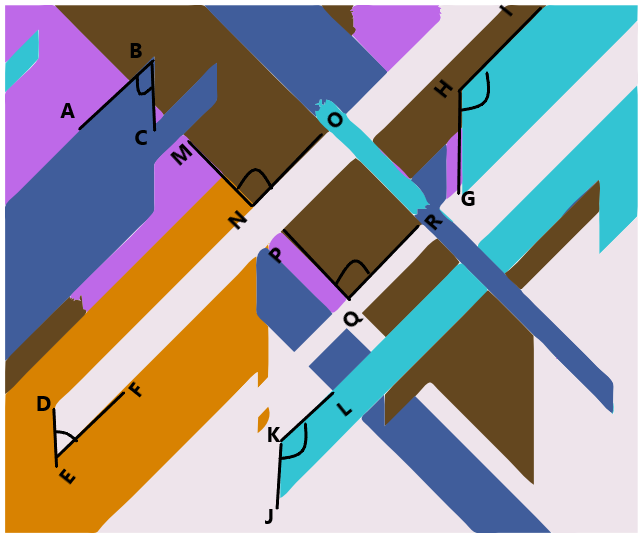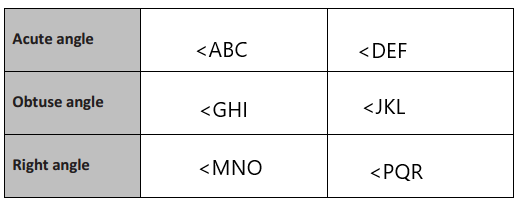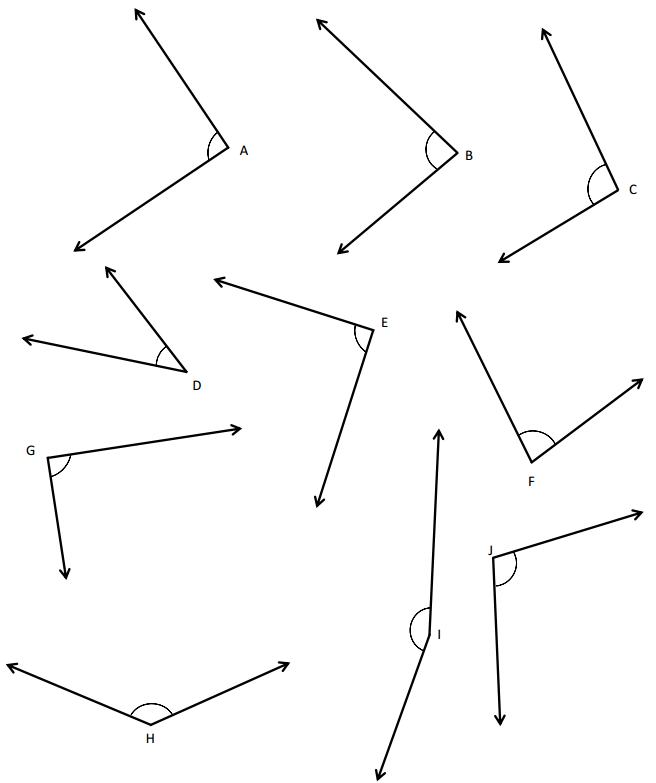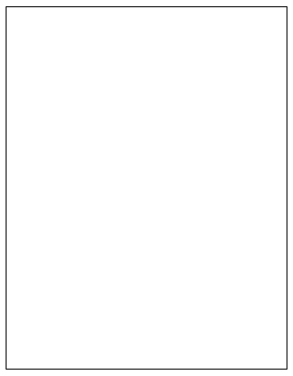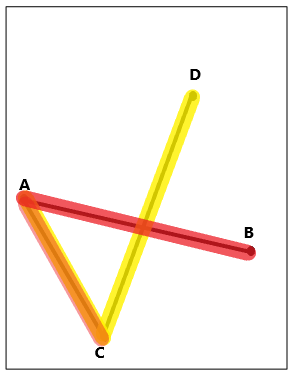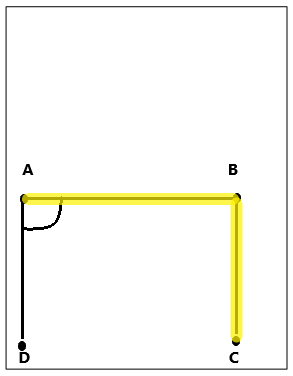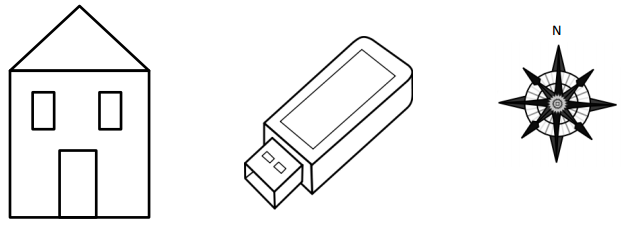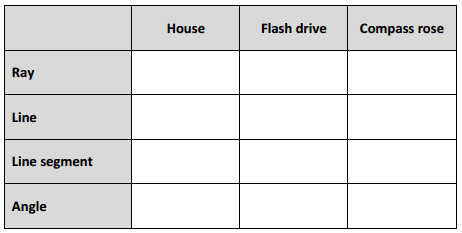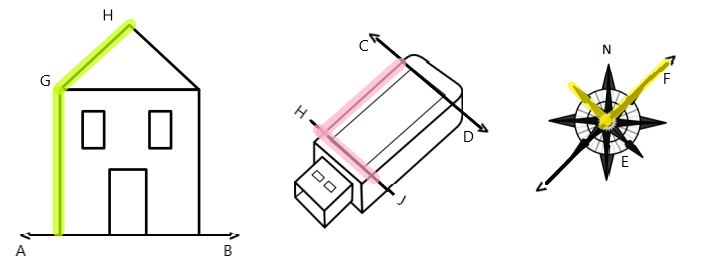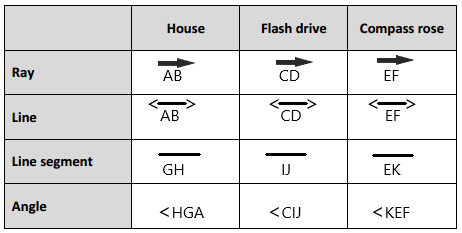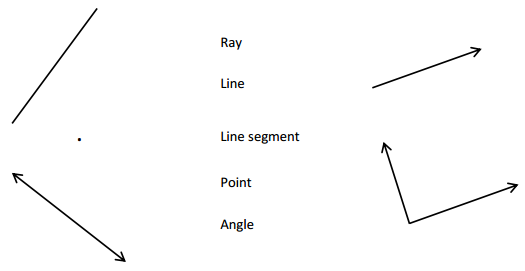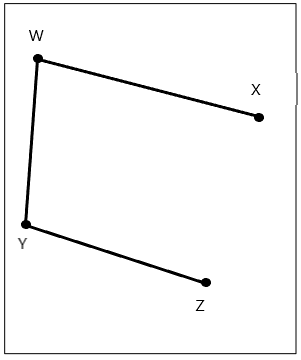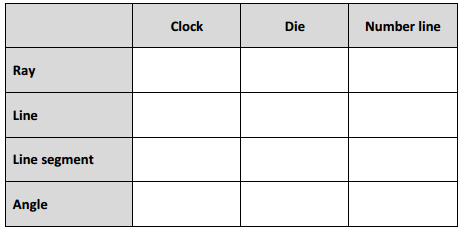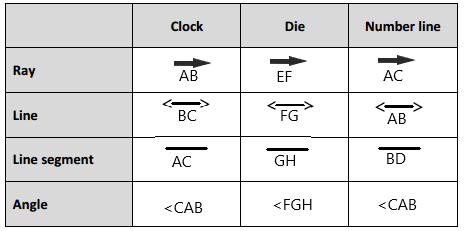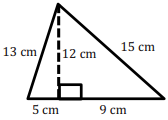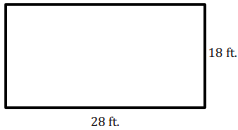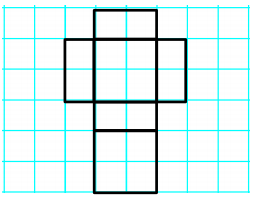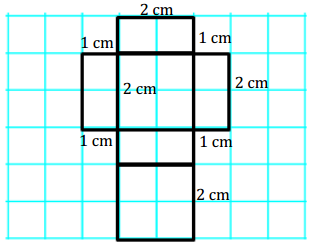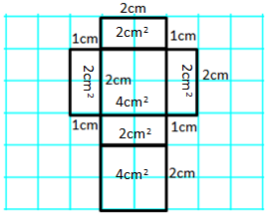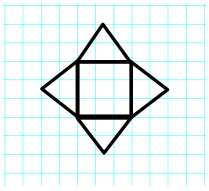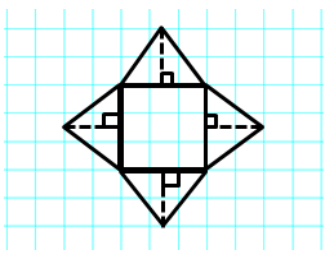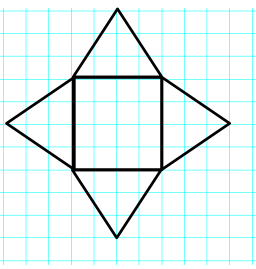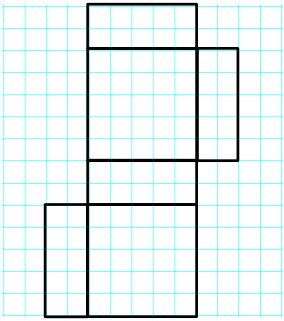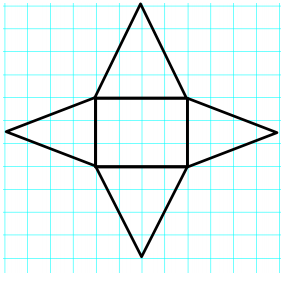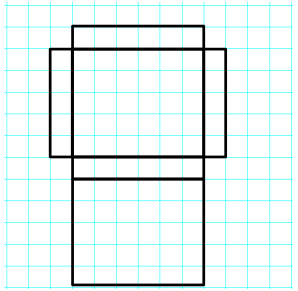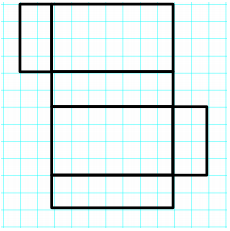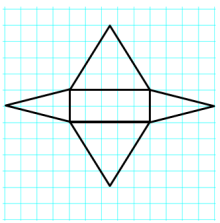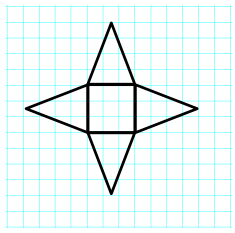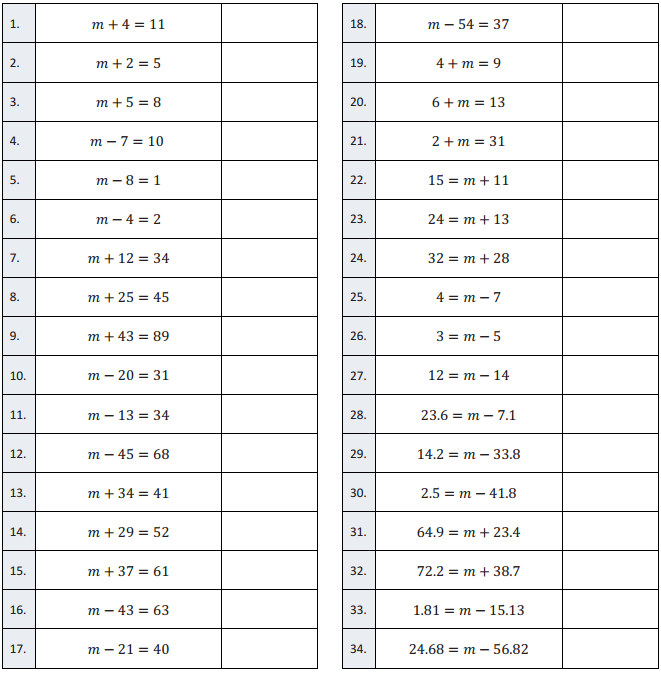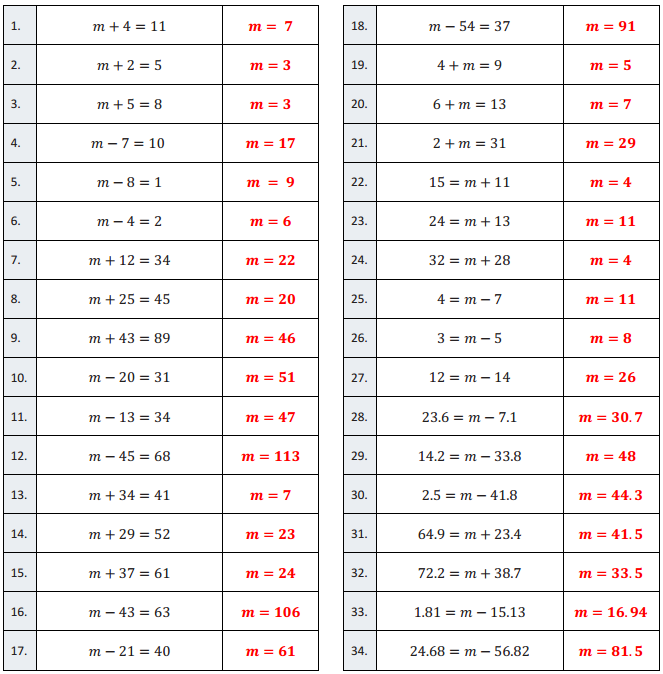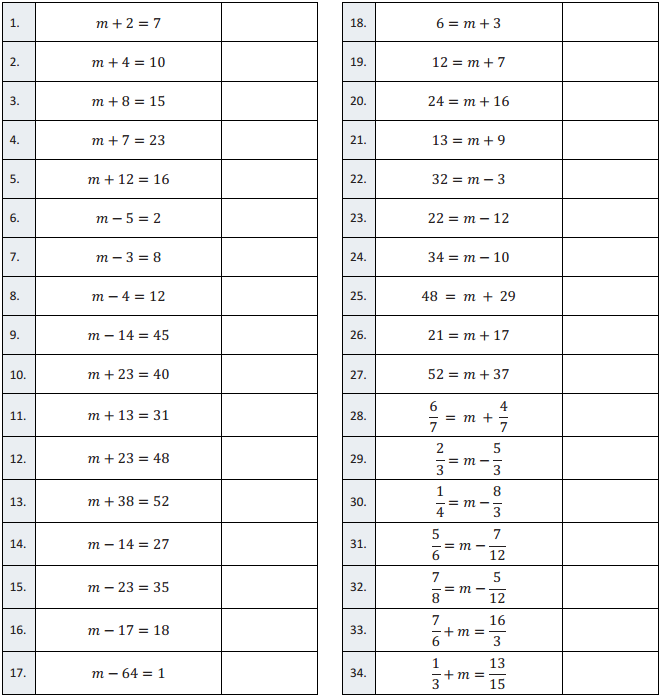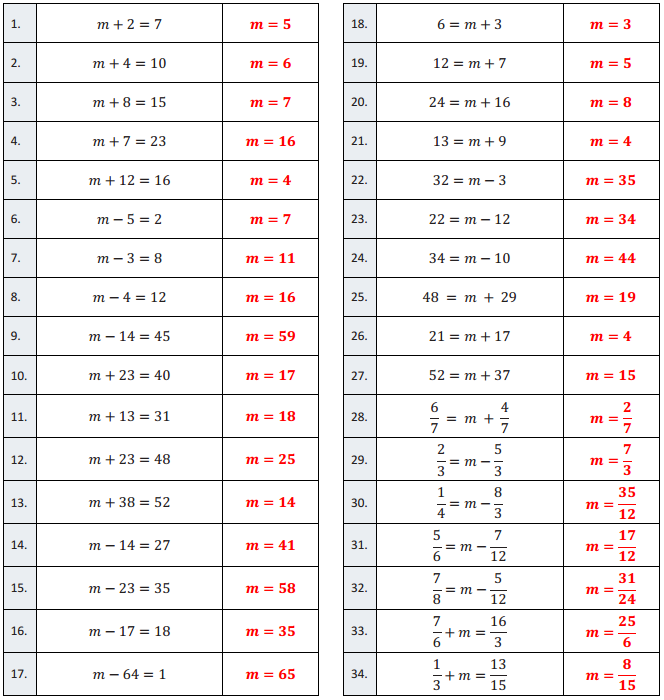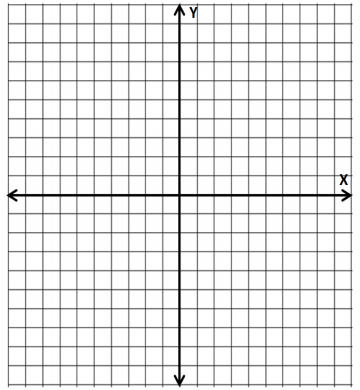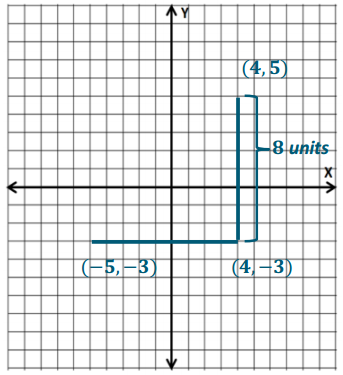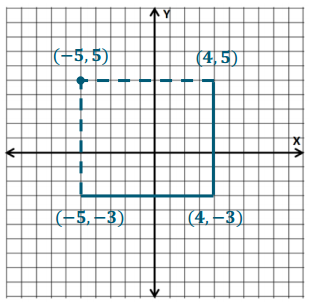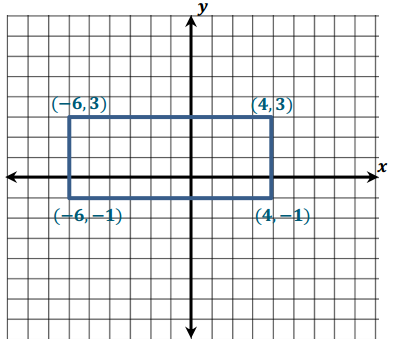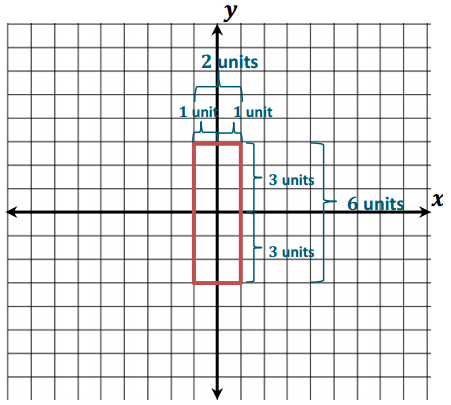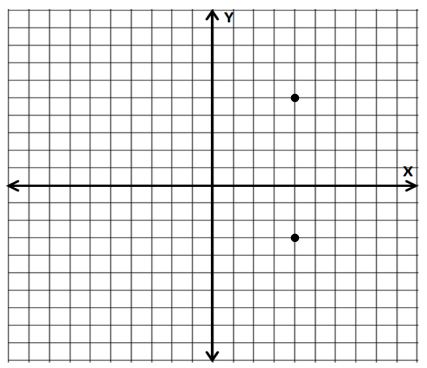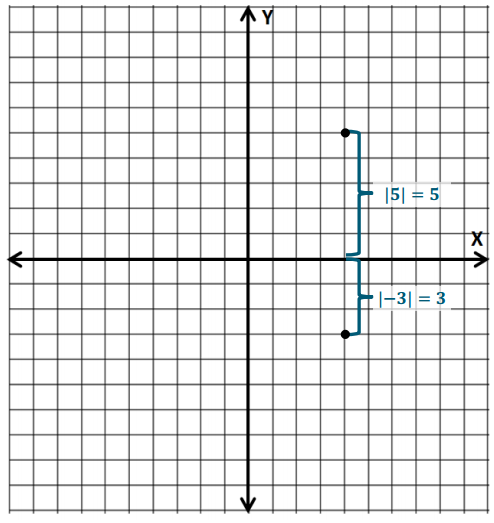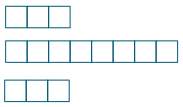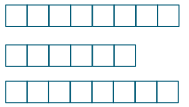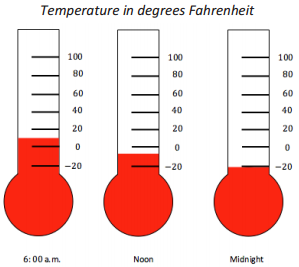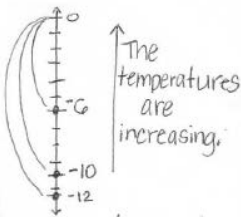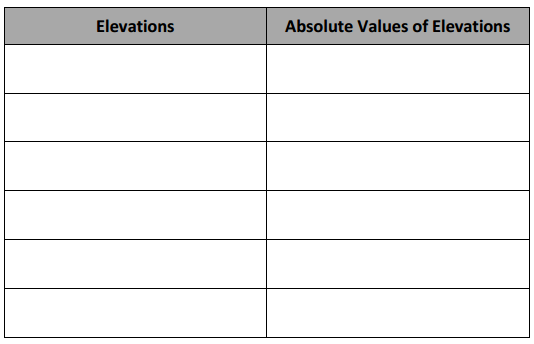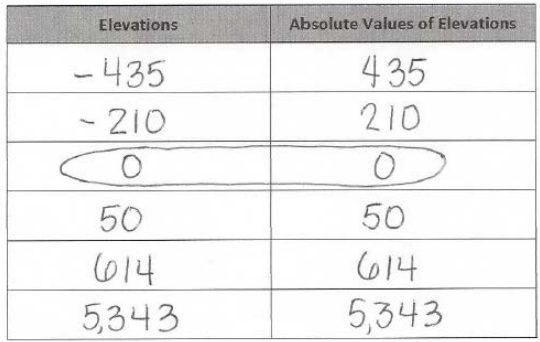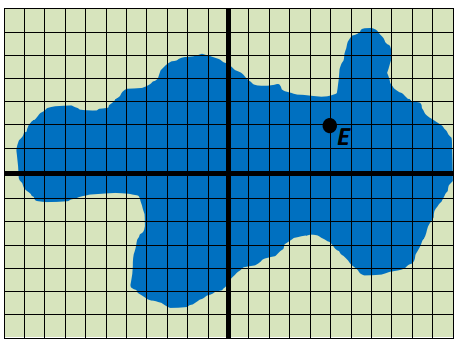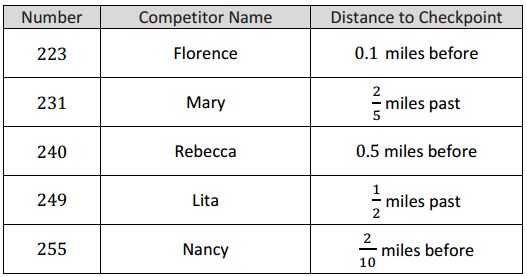Engage NY Eureka Math 4th Grade Module 4 Lesson 6 Answer Key
Eureka Math Grade 4 Module 4 Lesson 6 Practice Sheet Answer Key
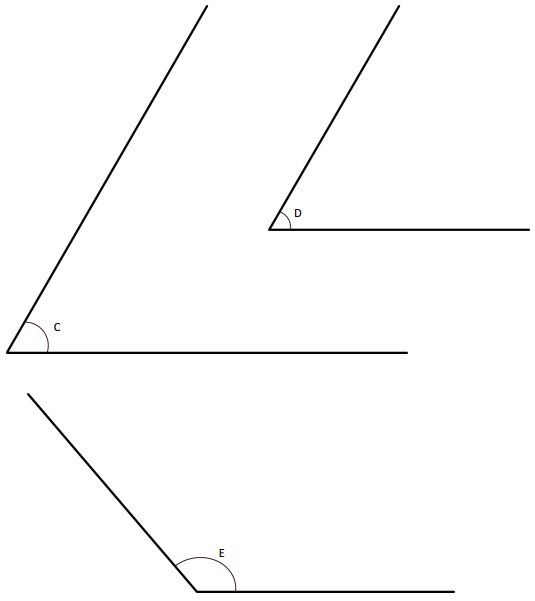
Answer:
The angle C is an acute angle.
The angle D is an acute angle.
The angle E is an obtuse angle.
Explanation:
In the above image, we can see that the angle D is less than 90°. So the angle D will be the acute angle. And we can see that angle C is less than 90°. So the angle D will be the acute angle. And we can see that angle E is greater than 90°, so the angle is an obtuse angle.
Eureka Math Grade 4 Module 4 Lesson 6 Problem Set Answer Key
Question 1.
Use a protractor to measure the angles, and then record the measurements in degrees.
a.

Answer:
The above angle is 36°.
Explanation:
By measuring the angle with protractor we will get the angle as 36° and it is an acute angle as the angle is less than 90°.
b.

Answer:
The above angle is 36°.
Explanation:
By measuring the angle with protractor we will get the angle as 36° and it is an acute angle as the angle is less than 90°.
c.

Answer:
The above angle is 90°.
Explanation:
By measuring the angle with protractor we will get the angle as 90° and it is a right angle as the angle is 90°.
d.

Answer:
The above angle is 90°.
Explanation:
By measuring the angle with protractor we will get the angle as 90° and it is a right angle as the angle is 90°.
e.

Answer:
The above angle is 36°.
Explanation:
By measuring the angle with protractor we will get the angle as 36° and it is an acute angle as the angle is less than 90°.
f.

Answer:
The above angle is 155°.
Explanation:
By measuring the angle with protractor we will get the angle as 155° and it is an obtuse angle as the angle is greater than 90°.
g.

Answer:
The above angle is 155°.
Explanation:
By measuring the angle with protractor we will get the angle as 155° and it is an obtuse angle as the angle is greater than 90°.
h.

Answer:
The above angle is 90°.
Explanation:
By measuring the angle with protractor we will get the angle as 90° and it is a right angle as the angle is 90°.
i.
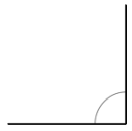
Answer:
The above angle is 90°.
Explanation:
By measuring the angle with protractor we will get the angle as 90° and it is a right angle as the angle is 90°.
j.

Answer:
The above angle is 150°.
Explanation:
By measuring the angle with protractor we will get the angle as 150° and it is an obtuse angle as the angle is greater than 90°.
Question 2.
a. Use three different-size protractors to measure the angle. Extend the lines as needed using a straightedge.
Protractor #1: ________°
Protractor #2: ________°
Protractor #3: ________°
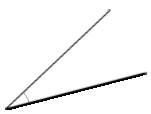
Answer:
Protractor #1: 29°
Protractor #2: 29°
Protractor #3: 29°
Explanation:
By using three different protractors we have got the same angle measurement, which is 29°.
b. What do you notice about the measurement of the above angle using each of the protractors?
Answer:
We have noticed that the measure of the angle is the same using each of the protractors.
Question 3.
Use a protractor to measure each angle. Extend the length of the segments as needed. When you extend the segments, does the angle measure stay the same? Explain how you know.
a.
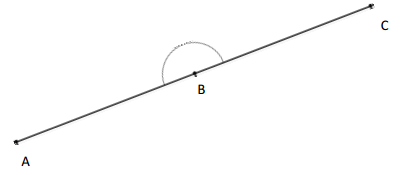
Answer:
Here, the angle measurement remains the same, we came to know that by measuring with a small protractor. Then we extended the length of the segments and then we have to measure with a large protractor. So by measuring with a small protractor and large protractor there is no change in measuring the angles. And the measurement of the angle is 180°.
b.
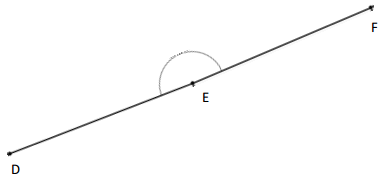
Answer:
Here, the angle measurement remains the same, we came to know that by measuring with a small protractor. Then we extended the length of the segments and then we have to measure with a large protractor. So by measuring with a small protractor and large protractor there is no change in measuring the angles. And the measurement of the angle is 178°.
Eureka Math Grade 4 Module 4 Lesson 6 Exit Ticket Answer Key
Use any protractor to measure the angles, and then record the measurements in degrees.
Question 1.
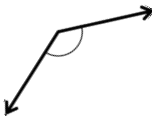
Answer:
The above angle is 105°.
Explanation:
By measuring the angle with protractor we will get the angle as 105° and it is an obtuse angle as the angle is greater than 90°.
Question 2.
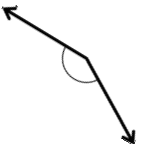
Answer:
The above angle is 150°.
Explanation:
By measuring the angle with protractor we will get the angle as 150° and it is an obtuse angle as the angle is greater than 90°.
Question 3.
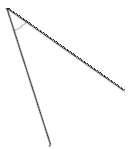
Answer:
The above angle is 36°.
Explanation:
By measuring the angle with protractor we will get the angle as 36° and it is an acute angle as the angle is less than 90°.
Question 4.
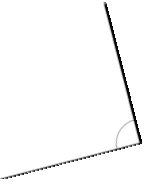
Answer:
The above angle is 90°.
Explanation:
By measuring the angle with protractor we will get the angle as 90° and it is a right angle as the angle is 90°.
Eureka Math Grade 4 Module 4 Lesson 6 Homework Answer Key
Question 1.
Use a protractor to measure the angles, and then record the measurements in degrees.
a.

Answer:
The angle would be 60° or above but less 90° and the angle is called as acute angle.
Explanation:
In the above image, we can see that the angle is less than 90°. So the angle would be 60° or above but less 90° and the angle is called as acute angle.
b.

Answer:
The angle would be 60° or above but less 90° and the angle is called as acute angle.
Explanation:
In the above image, we can see that the angle is less than 90°. So the angle would be 60° or above but less 90° and the angle is called as acute angle.
c.

Answer:
The angle would be 60° or above but less 90° and the angle is called as acute angle.
Explanation:
In the above image, we can see that the angle is less than 90°. So the angle would be 60° or above but less 90° and the angle is called as acute angle.
d.
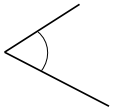
Answer:
The angle would be 60° or above but less 90° and the angle is called as acute angle.
Explanation:
In the above image, we can see that the angle is less than 90°. So the angle would be 60° or above but less 90° and the angle is called as acute angle.
e.

Answer:
The angle would be above 90° but less 180° and the angle is called as obtuse angle.
Explanation:
In the above image, we can see that the angle is greater than 90°. So the angle would be above 90° and the angle is called as obtuse angle.
f.

Answer:
The angle would be above 90° but less 180° and the angle is called as obtuse angle.
Explanation:
In the above image, we can see that the angle is greater than 90°. So the angle would be above 90° and the angle is called as obtuse angle.
g.

Answer:
The angle would be above 90° but less 180° and the angle is called as obtuse angle.
Explanation:
In the above image, we can see that the angle is greater than 90°. So the angle would be above 90° and the angle is called as obtuse angle.
h.
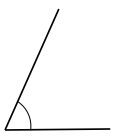
Answer:
The angle would be 60° or above but less 90° and the angle is called as acute angle.
Explanation:
In the above image, we can see that the angle is less than 90°. So the angle would be 60° or above but less 90° and the angle is called as acute angle.
i.
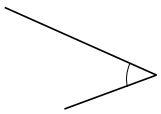
Answer:
The angle would be 60° or above but less 90° and the angle is called as acute angle.
Explanation:
In the above image, we can see that the angle is less than 90°. So the angle would be 60° or above but less 90° and the angle is called as acute angle.
j.

Answer:
The angle would be above 90° but less 180° and the angle is called as obtuse angle.
Explanation:
In the above image, we can see that the angle is greater than 90°. So the angle would be above 90° and the angle is called as obtuse angle.
Question 2.
Using the green and red circle cutouts from today’s lesson, explain to someone at home how the cutouts can be used to show that the angle measures are the same even though the circles are different sizes. Write words to explain what you told him or her.

Answer:
Here, if we center the smaller circle on the larger circle and the diameters lines up. So the angles are in the same measurement and the arcs are different.
Question 3.
Use a protractor to measure each angle. Extend the length of the segments as needed. When you extend the segments, does the angle measure stay the same? Explain how you know.
a.

Answer:
Here, the angle measurement remains the same, we came to know that by measuring with a small protractor. Then we extended the length of the segments and then we have to measure with a large protractor. So by measuring with a small protractor and large protractor there is no change in measuring the angles. And the measurement of the angle is 178°.
b.

Answer:
Here, the angle measurement remains the same, we came to know that by measuring with a small protractor. Then we extended the length of the segments and then we have to measure with a large protractor. So by measuring with a small protractor and large protractor there is no change in measuring the angles. And the measurement of the angle is 180°.
